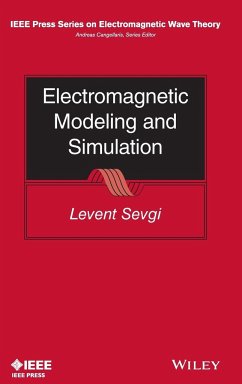
Electromagnetic Inverse Scatte
Versandkostenfrei!
Versandfertig in über 4 Wochen
134,99 €
inkl. MwSt.
Weitere Ausgaben:

PAYBACK Punkte
67 °P sammeln!
A comprehensive and updated overview of the theory, algorithms and applications of for electromagnetic inverse scattering problems_ Offers the recent and most important advances in inverse scattering grounded in fundamental theory, algorithms and practical engineering applications_ Covers the latest, most relevant inverse scattering techniques like signal subspace methods, time reversal, linear sampling, qualitative methods, compressive sensing, and noniterative methods_ Emphasizes theory, mathematical derivation and physical insights of various inverse scattering problems_ Written by a leadin...
A comprehensive and updated overview of the theory, algorithms and applications of for electromagnetic inverse scattering problems
_ Offers the recent and most important advances in inverse scattering grounded in fundamental theory, algorithms and practical engineering applications
_ Covers the latest, most relevant inverse scattering techniques like signal subspace methods, time reversal, linear sampling, qualitative methods, compressive sensing, and noniterative methods
_ Emphasizes theory, mathematical derivation and physical insights of various inverse scattering problems
_ Written by a leading expert in the field
_ Offers the recent and most important advances in inverse scattering grounded in fundamental theory, algorithms and practical engineering applications
_ Covers the latest, most relevant inverse scattering techniques like signal subspace methods, time reversal, linear sampling, qualitative methods, compressive sensing, and noniterative methods
_ Emphasizes theory, mathematical derivation and physical insights of various inverse scattering problems
_ Written by a leading expert in the field













